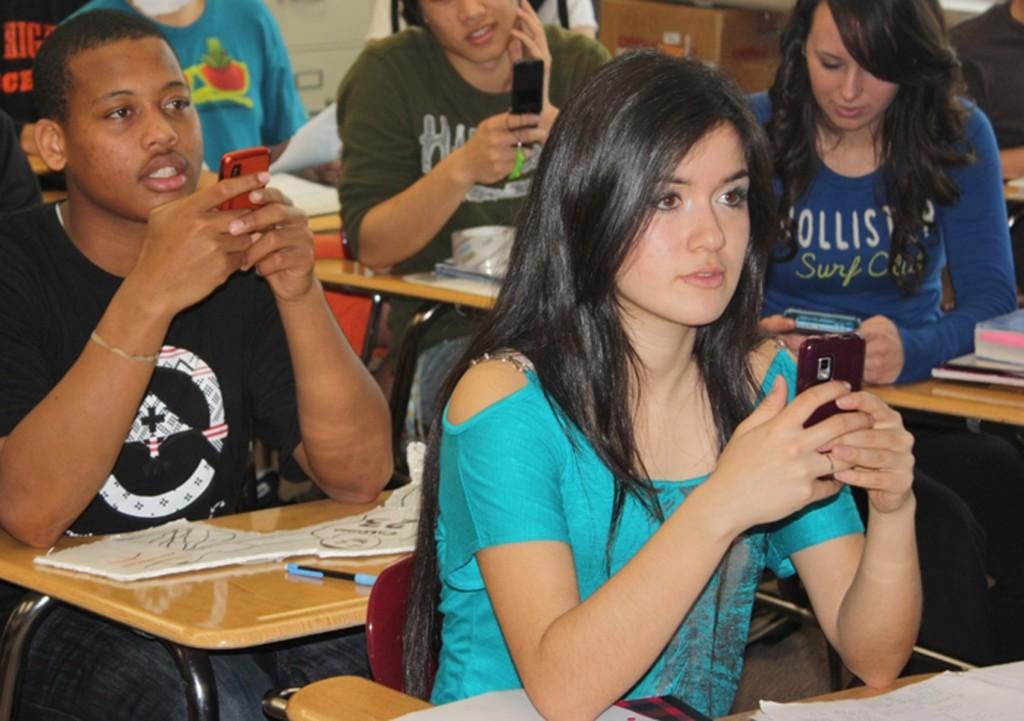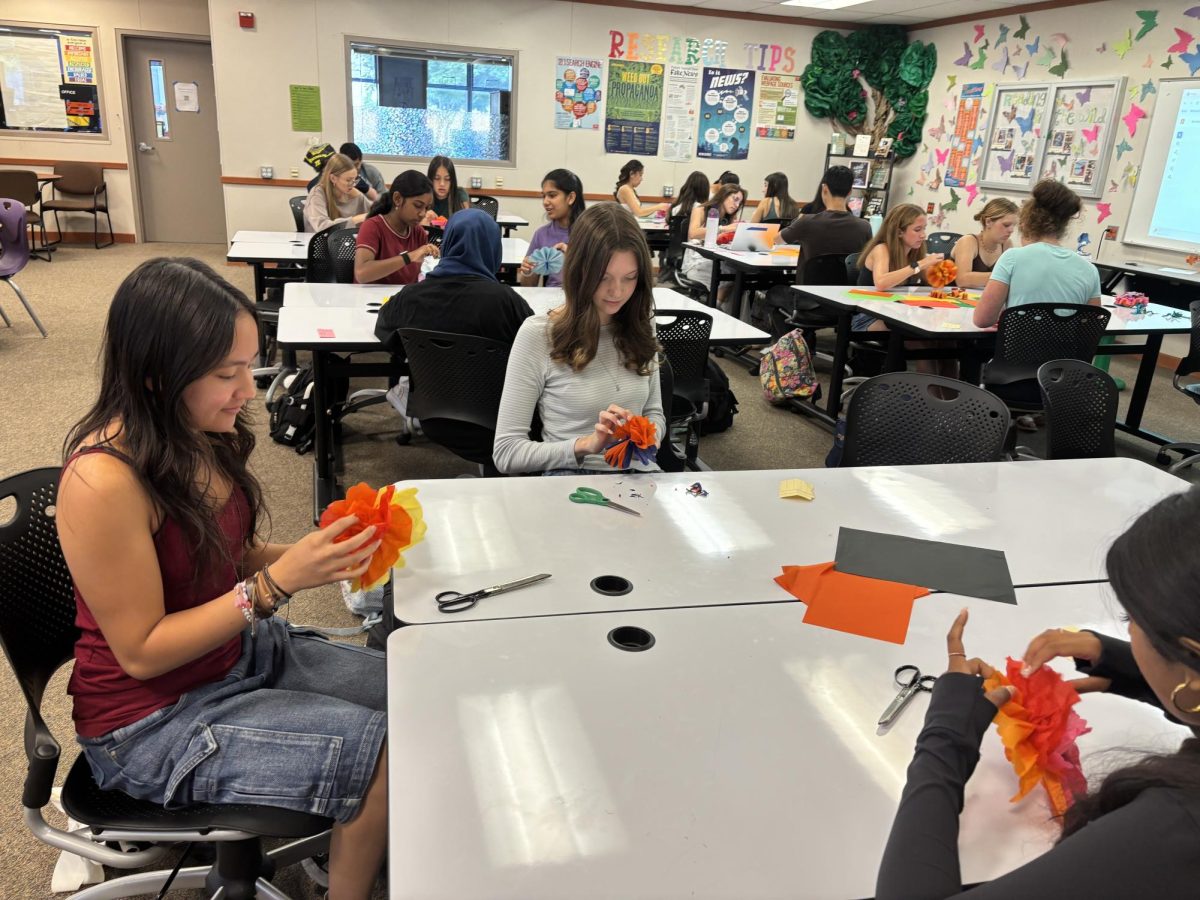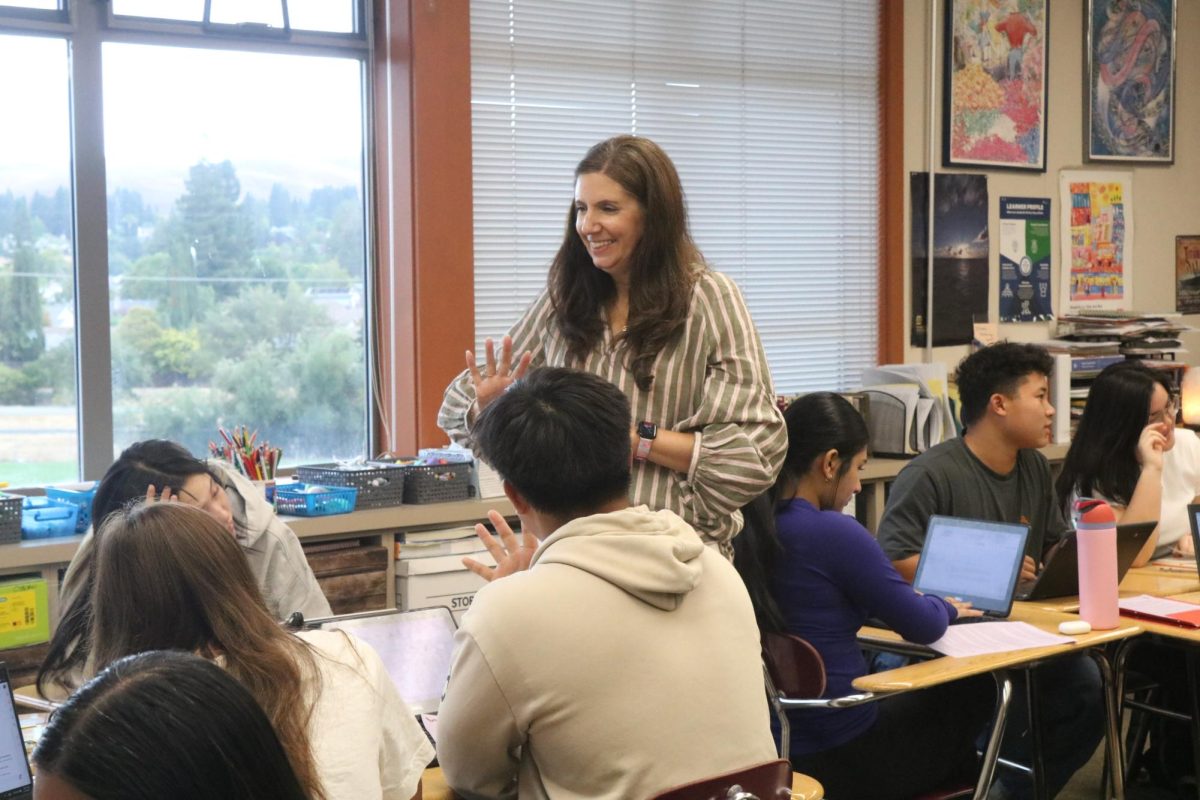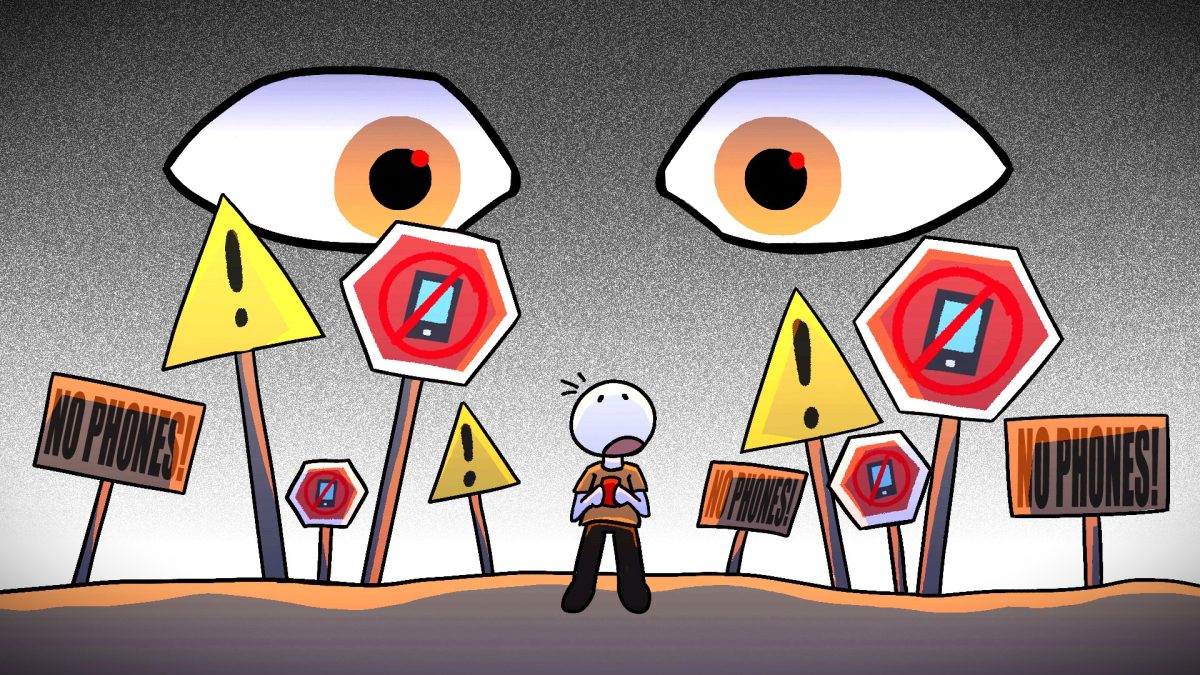
by Jacqueline Uranga, staff writer
Cal High has a strict policy against texting in class, with one exception.
For the first time, texting is being used as an educational tool in the classroom.
Math teachers Ahn Nguyen and Jennifer Gilson began an online program this year that has students text in answers to multiple choice questions.
“The first time I said, ‘OK, take out your texting device,’ everybody looked at me,” said Nguyen.
Students were initially surprised by this apparent change from the usual school rules against texting.
While school policy is clear that social texting is not allowed during class time, administrators are encouraging teachers to incorporate technology in the classroom.
“We want to see more teachers using technology to engage kids because that’s how students learn now,” said assistant principal Jennifer Tilton.
For some classes, incorporating technology has meant signing up for an online program on the Web site polleverywhere.com.
The site allows teachers to create multiple choice questions and have students submit answers via text.
While limited use of the program is offered for free, Cal has paid the cost of the full program for all teachers.
In Gilson and Nguyen’s classes, questions are projected on the overhead, along with a list of possible answers and a number to text their answer. When the answers are sent in, students can see a tally on the screen of the percentages of each answer choice the class has chosen.
These quizzes are used in conjunction with lessons to check the class’s understanding of a particular concept.
In Mrs. Gilson’s classes, the texting program is also used to help students practice for the STAR Test.
An individual student’s score is anonymous and the quizzes are never graded for points.
“There’s no fear. You don’t have to worry about being wrong and people being able to see that you’re wrong,” said Gilson. “I think that makes students more willing to participate.”
When this program was started, Nguyen polled her students to find out which of them had unlimited texting plans and which of them did not.
In her five classes, almost all of the students had unlimited texting. The majority of students who did not were still interested in trying out the new texting tool in the classroom.
“I think it would be beneficial to have a texting program in more math classes, because its a way to get everyone to participate” said senior Mark Tye.
Students without texting plans could also participate by following along, and in some cases, even have their friends submit answers for them.
“They don’t need to text their answers,” said junior Bradley Spence, a student in Nguyen’s class. “It’s still fun to see everybody else try.”
The texting program does not record which students participate in a quiz, but only how many students participate. On average, a quarter to a third of the students in Nguyen’s classes do not participate in taking a quiz.
One issue with the new program has been the difficulty in spotting students using their phones to text their friends during class. While the majority of students are using their phones to text for classroom purposes, it is virtually impossible to know if one student is using the opportunity to get around the school texting policy.
But Nguyen does not see this as a major issue for her class because the quiz is meant to be a quick test of students’ understanding and only accounts for roughly five minutes of class time.
The new program also gives teachers the ability to assess students without handing out piles of paper.
Having students text in answers can save on class time over regular quizzes by reducing the use of copy machines and the time it normally takes to grade student work.
Mrs. Gilson and Mrs. Nguyen see the new program as a way to quickly receive feedback from students. Having students text in their answers can provide instant feedback on the class’s understanding of a concept.
Perhaps more than anything, the texting program can serve a class by breaking up the 100- minute routine to give students a change of pace.
“It’s more like a game where you’re trying to get the right answer,” said junior Marc Horschman, one of Nguyen’s students.
The program aims to increase student attention during class activities through the lengthy periods of a block schedule.
As schools strive to incorporate technology into the classroom, more students could soon hear their teachers asking them to take out their cell phones in preparation for the day’s lesson.





